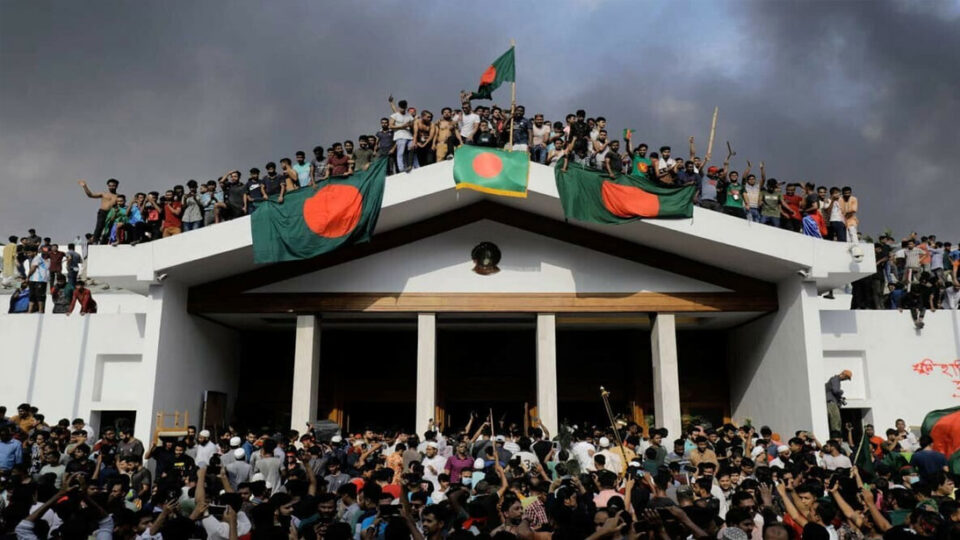One Year After Political Shift in Bangladesh: Ganabhaban to Become a Museum of National Memory
DHAKA – One year after the historic student-led protests in August 2024 that resulted in a major political transition in Bangladesh, the country remains on a path of change and reflection.
Photographs of jubilant crowds waving flags atop the Ganabhaban Palace in Dhaka became iconic symbols of the nation’s democratic movement, as former Prime Minister Sheikh Hasina departed by helicopter for India during the height of the protests.
Today, the once heavily guarded residence is being transformed into a public museum, aimed at preserving the nation’s recent history and inspiring future generations.
🏛️ Ganabhaban: From Seat of Power to Symbol of Change
Authorities have announced plans to convert the Ganabhaban Palace, formerly the official residence of Sheikh Hasina, into a museum and learning center. The initiative is being led by the caretaker government, with support from civil society and historical preservation experts.
While some of the graffiti left by protestors remains untouched, such as calls for “justice” and “freedom”, the goal of the museum is not to incite division, but rather to document the journey of the nation through a difficult and transformative time.
“The museum’s purpose is to reflect, educate, and promote dialogue about democratic values,” said Tanzim Wahab, the project curator. “We want young people to explore ideas about building a stronger, more inclusive Bangladesh.”
🕊️ A Platform for Reflection and Democracy
The under-construction museum will include:
-
Documentary exhibits about key protest events
-
Life stories of activists and victims of political unrest
-
Interactive displays and films aimed at younger generations
-
Restoration of historical architecture to retain the palace’s legacy
According to Wahab, the space will also host educational programs on human rights, democratic participation, and conflict resolution, ensuring it becomes a hub for civic engagement.
🧭 Transitional Leadership and Democratic Goals
Nobel Peace Prize laureate Muhammad Yunus, 85, is currently leading the caretaker government until national elections scheduled for early 2026. He emphasized that the museum is part of a broader effort to strengthen democratic institutions and promote peace.
“This is about learning from the past and building a better future for all Bangladeshis,” Yunus said.
International organizations, including Human Rights Watch, have encouraged Bangladesh to ensure transitional justice is fair and not politically motivated, and to maintain a focus on human rights and institutional reform.
🔧 A Nation Rebuilding, A People Remembering
While the Ganabhaban Palace is being preserved as a space of national memory, several other symbols from the previous government have been removed or repurposed. Statues, portraits, and government buildings are being reassessed for their public significance and historical context.
For many young people who participated in the 2024 movement, the transformation represents hope and a commitment to progress.
“It’s about moving forward, not erasing the past,” said Mashnun, a 23-year-old student. “This museum can help future generations understand what we stood for.”
📌 Looking Ahead
As Bangladesh continues to rebuild its institutions and prepare for democratic elections, the conversion of Ganabhaban into a museum serves as a symbol of national resilience and transformation. It stands not only as a reminder of past challenges but also as a beacon for unity, dialogue, and a better tomorrow.

